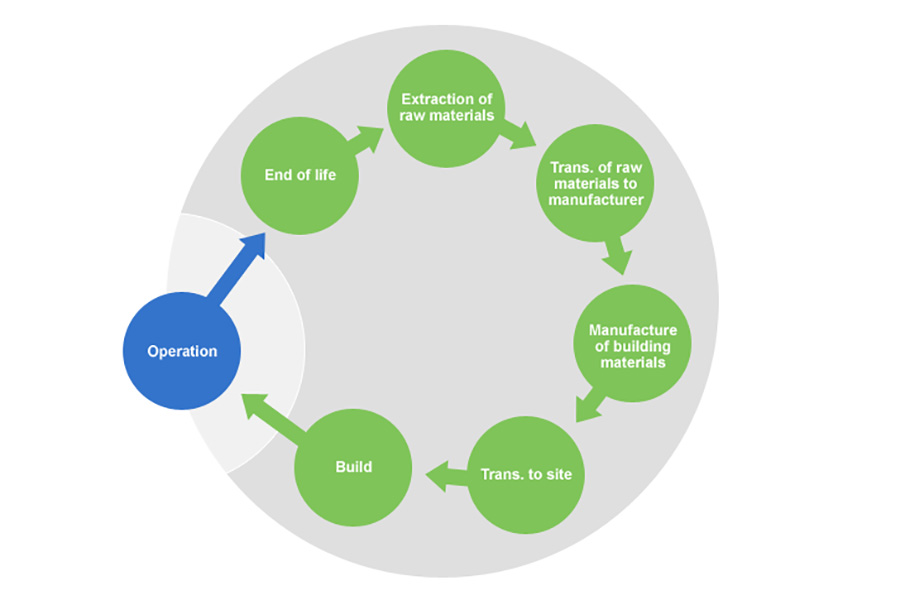What’s a ‘Net Zero Carbon’ building? It may generate its own power, emit no carbon, but it might be constructed of materials full of carbon. On the other hand, it might be constructed of sustainable materials using no carbon, but may run on grid electricity from a coal fired generator! What does ‘Net Zero Carbon’ mean exactly?
Well it certainly seems that 2020 is the year for announcing Net Zero Carbon strategies and goals but amid all the hype and discussion, perhaps we have lost our way a little in deep understanding of what Net Zero Carbon means? It can mean different things to different organisations, individuals and countries with various global organisations who hold slightly differing definitions.
The World Green Building Council’s (WGBC) description that “a net zero carbon building is a building that is highly energy-efficient and fully powered from on-site and/or off-site renewable energy sources”, is a good definition for operational carbon, but misses the real elephant in the room of the embodied carbon impacts of material extraction, processing, manufacturing and transport.
According to the Australian Sustainable Built Environment Council (ASBEC) a zero carbon building has no net annual greenhouse gas emissions resulting from on-site energy or energy procurement (Scope 1 and Scope 2) from its operation. Furthermore, if you were to consider meeting the Australian government’s Carbon Neutral certification, a minimum NABERS Energy rating of 4 stars is required (without Green Power), implying this focus on operational carbon in terms of energy efficiency.
In the UK during the past five years we have seen a shift from historical ‘zero carbon’ policies focused only on operational energy and modelled performance in new buildings, to a clear expansion in scope to encompass the whole life carbon impacts of both new and, crucially, existing homes and buildings.
What’s interesting is that by the time a building is built and occupied somewhere between 30% and 70% of its lifetime carbon may already have been accounted for. This percentage may even be on the rise with the tightening of building regulations and a push for the use of materials with high embodied carbon in order to deliver low operational carbon requirements.

Embodied carbon is crucially important as this is the carbon that is emitted TODAY to make a building and there are decisions that can be made early in the design process to both reduce the embodied carbon of the building and still deliver an energy efficient or even zero energy building.
The emissions we produce between now and 2050 will determine whether we meet the goals of the 2015 Paris Climate Accord and prevent the worst effects of climate change.
The recent LETI Climate Emergency Design guide has taken the right approach in my mind by taking Net Zero Carbon to mean whole life carbon – this is both operational carbon and embodied carbon.
This whole life carbon ensures that best practice targets for embodied carbon are met and that a starting point is materials selection prioritising re-used materials and designing for disassembly at end of life.
While Net Zero operational carbon is admirable in terms of not burning fossil fuels, and in improving energy performance – it is only half of the story and we are missing the potential to really examine our materials supply chains and enforce sustainable improvements in their associated processes, which account for an astounding amount of carbon being emitted daily.





















